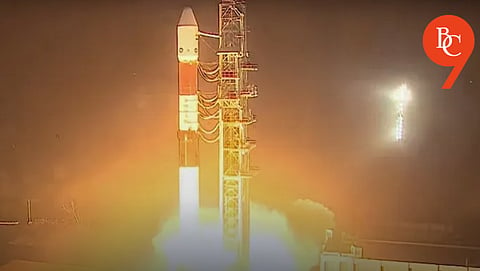

The PSLV-C61 mission was launched at 5:59 am from Sriharikota, carrying the advanced EOS-09 satellite, which was designed for all-weather surveillance and a range of earth observation applications. The rocket’s first and second stages performed flawlessly, but trouble arose during the critical third stage of the flight.
ISRO confirmed that while the initial stages were nominal, an “observation in the third stage” led to the mission’s failure. Specifically, there was a sudden fall in the chamber pressure of the third-stage motor case, which prevented the rocket from achieving the velocity and trajectory needed to deploy the satellite into a sun-synchronous polar orbit.
Initial analysis points to a suspected failure in the third stage’s flex nozzle control system-a sophisticated mechanism that steers the rocket by adjusting the nozzle’s orientation. This system, made of layered elastomeric materials, is essential for precise thrust vector control during the 114-second burn of the third stage.
A malfunction here can cause thrust misalignment, leading the rocket to veer off course. Telemetry data showed a sudden drop in chamber pressure during this phase, confirming that the propulsion system did not perform as expected. As a result, the EOS-09 satellite failed to reach its planned 525 km orbit.
The PSLV has been India’s most reliable launch vehicle, with only three failures in 63 launches since its debut in 1993. This mission was particularly significant as EOS-09 was equipped with a Synthetic Aperture Radar (SAR) payload for vital applications like border surveillance, agriculture, disaster management, and infrastructure monitoring. The loss of this satellite delays India’s plans to strengthen its remote sensing and surveillance capabilities, especially amid rising strategic needs.
Immediately after the failure, ISRO initiated its standard protocol by forming a Failure Analysis Committee (FAC) comprising senior scientists and engineers from various ISRO centers and academia. This team will meticulously review all telemetry and flight data-from pre-launch preparations to the moment of failure-to identify the root cause. The FAC will analyze data such as velocity, altitude, engine performance, and pressure readings to pinpoint the exact sequence of events. Special attention will be given to the third stage’s propulsion and nozzle systems, comparing actual performance with the expected flight profile.
Once the root cause is established, the FAC will recommend technical and operational fixes to prevent similar issues in future missions. ISRO will also review manufacturing records, test protocols, and quality assurance processes for the affected components.ISRO leadership, including former chief S. Somanath, has emphasized that failures are part of the agency’s journey and learning process. The agency is expected to reattempt the mission with improved safeguards as soon as possible, ensuring India’s space program continues its upward trajectory.
Former ISRO scientists have reiterated that while failures are disappointing, they are also opportunities for growth. Each setback leads to a deeper understanding of complex systems, making future missions safer and more reliable. ISRO’s rigorous approach to failure analysis and its culture of transparency and learning have been key to its global reputation.
